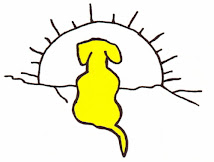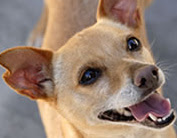Just twice this week it's happened again. First in my own neighborhood, I heard someone address their dog with "Hey you good for nothing dog." I say to myself "HUH?" Then I was just thankful the pooch didn't speak english. He just felt the scratch under his chin...
The second incident was a woman and her dog at a very large and popular park where dogs are allowed off leash during certain hours. Well, it seems this woman was leaving the park...her dog was walking nicely with her. But then the pooch started to walk in a different direction. Not back to the area with the other dogs... just not with his (or her) guardian.
The woman started berating this poor pooch over and over. Yelling at it to "Come here right now!" In a very deep threatening voice... Yikes! No wonder the dog wanted to go the other way! I would have high-tailed it out of there too! Geez - I wanted to go over my "recall rules" like I do in my dog training classes, but thought better of it - not the challenge I wanted. Plus, I was out for a run, and she hadn't hired me as a private dog trainer in Ventura. If she had, I would have given her the five rules:
- Only call your dog for something pleasant, otherwise, just go get your dog.
- Use your happy voice and body language to get them to want to come running.
- Only call them when you know you're going to get them to come. Otherwise you're just wasting your breath, and probably getting more frustrated.
- If you thought you were going to "get it" and didn't. Go get your dog, take them to where you called them from, and reward them.
- Throw a party - if you called them and they came running!
So my BIG BOLD question, based upon the relationship you have with your dog is:
If the situation were reversed,
would your dog have adopted YOU?








